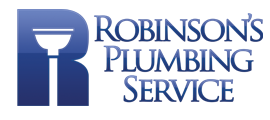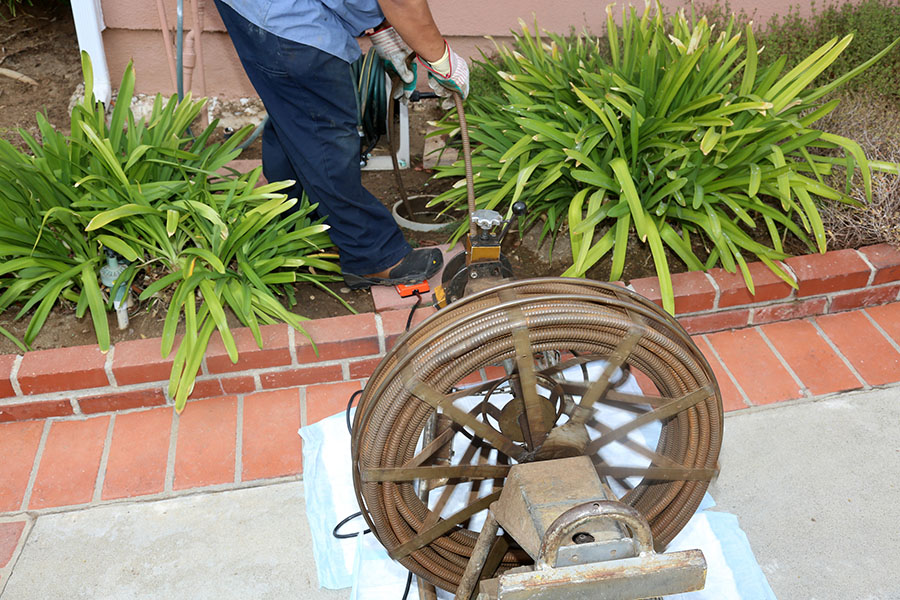Are you experiencing frequent sewer line repairs? Have you been told your sewer lines are infiltrated with roots? Maybe someone suggested that your sewer line is partially collapsed?
Whatever the issue may be, there are two main repair options when it comes to a sewer line:
- Traditional sewer line replacement
- Trenchless sewer line repair
Keep reading to learn more about these two options and what it might look like to fix your sewer line.
Traditional Sewer Line Replacement
When most homeowners and commercial property owners think about replacing a sewer line, they envision large trenches, heavy machinery, and destroyed landscaping and hardscaping. This is because traditional newer pipe replacement involves digging a trench along the entire length of the sewer line that is to be replaced, removing it, and replacing it with a new pipe.
Property owners often choose this method because it gives them peace of mind knowing that the pipe can be visually inspected after it is replaced to ensure the installation has gone correctly and that the new pipe is in the proper position.
For some property owners, this may be the correct solution to a clogged, leaking, and partially or completely collapsed sewer line. However, if the sewer pipe runs under parking lots and sidewalks, it may not be the most cost-effective solution due to the added costs to repair and replace landscaping and concrete or asphalt.
In these cases, it may make more sense to choose a trenchless sewer line repair over a traditional sewer line replacement.
Types of Trenchless Sewer Line Repair
There are three primary types of trenchless pipe repair, including:
- Directional drilling
- Pipe bursting
- Trenchless pipe lining
The method you choose will depend on your budget, the condition of your pipes and your plumber.
Directional Drilling
Directional drilling is a type of pipe replacement that involves digging a new tunnel for the sewer pipe, usually several feet under the existing sewer line.
This method is typically employed when there are extenuating circumstances that make replacing or repairing the existing sewer line extremely difficult or time-consuming and expensive.
Directional drilling involves using a horizontal drilling machine, which is usually not bigger than a small excavator or golf cart. The drilling machine bores into the ground to a certain depth before drilling horizontally for the entire length of the pipe that is to be replaced. Dirt and debris are removed from the tunnel, and the new pipe is inserted and connected to the existing pipe network.
Pipe Bursting
Pipe bursting is a process that involves breaking apart or bursting the original sewer line with a bursting head.
This trenchless sewer line repair technique is performed by digging two small access holes at the beginning and end of the pipe run in order to access the existing sewer line.
The bursting head is then pushed through the existing pipe run. As the bursting head moves forward, it breaks apart the old sewer pipe and pushes the fragments away from the area while simultaneously pulling the new pipe into place.
Trenchless Pipe Lining
Trenchless pipe lining is a relatively new way to restore underground sewer lines.
This technique is carried out by pipe-trained pipe-lining technicians and professional plumbers who are certified in trenchless pipe lining.
The greatest benefit of trenchless pipe lining is it can often be performed with limited to no digging. The process involves soaking a felt or fiberglass pipe liner in an epoxy resin and threading it through the existing sewer pipe. The liner is then inflated and pressed against the host pipe.
Once it is in place, it is left to cure for anywhere from four to 24 hours. This trenchless pipe repair technique is often referred to as CIPP (Cured-In-Place-Pipe), and it is essentially a pipe within a pipe.
Benefits of Trenchless Sewer Line Repair
Trenchless sewer line repair offers many benefits over traditional sewer line replacement.
The biggest benefit is that very little excavation needs to be performed, which means yards, landscaping, driveways, and sidewalks do not need to be dug up in order to reach the leaking sewer pipe.
Additional benefits of trenchless sewer line repair include:
- Faster repair process, usually completed in one to two days
- Less expensive than traditional sewer line replacement
- Minimal to no damage to landscaping and hardscaping
- No need to fill in large trenches
Choosing Between Traditional Pipe Replacement and Trenchless Sewer Line Repair
Generally speaking, you may want to choose a traditional sewer pipe replacement when the sewer pipe doesn’t run under any outbuildings, sidewalks, driveways or parking lots, and you don’t mind having your landscaping ruined by large trenches.
It also may be more cost-effective in some instances to choose a traditional replacement, depending on the layout of your drain and sewer line system.
Trenchless sewer line repair is typically chosen when the costs associated with the traditional replacement, including restoring landscape and repaving sections of the driveway or a parking lot, are higher than the trenchless option.
Home and business owners prefer trenchless sewer line repair when they can’t afford to have their plumbing system inoperable for long periods of time. It is also the best choice when they want an option that is environmentally friendly while providing the same life expectancy as a traditional sewer line replacement.
Choosing between traditional pipe repair and trenchless pipe repair may seem difficult, but our professional plumbers at Robinson’s Plumbing Service in Richmond can help you choose the best option for your home or business.
Call us at 804-794-0918 or click the button below to contact us today about sewer line repair.
Sewer Line Repair Services

